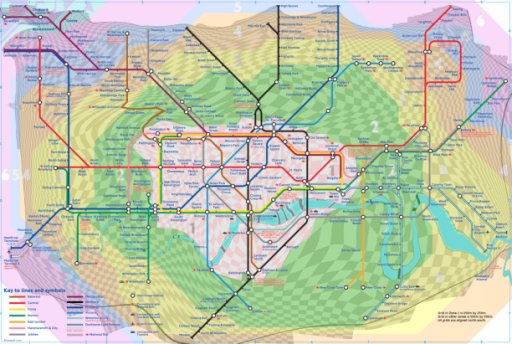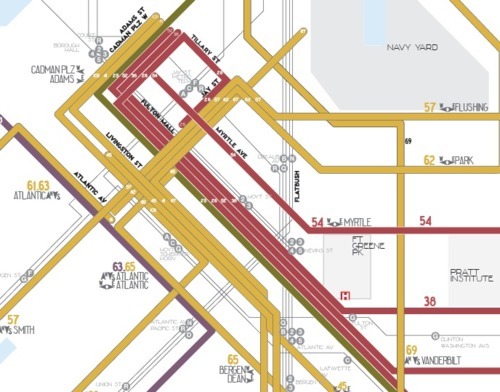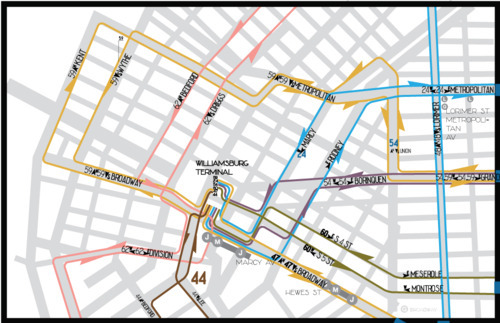
Transit's new Weekender offering provides an interactive, online solution to charting weekend service changes.
Over 30 years after being unceremoniously dumped in the face of extreme public outrage, the Massimo Vignelli subway map is making its triumphant return to the MTA this weekend. This map, repurposed to solve a problem that has vexed the authority for years, won’t be hanging in stations or cars, and in fact, it won’t be available in any physical form. Rather, the MTA will use it as a weekend landing page to offer straphangers a visual, interactive glimpse at the complicated array of service changes that often leave riders more confused than they should be.
The idea is a simple one. In fact, it’s a service Subway Weekender has been offering for years. By providing a visual representation of service changes instead of the jumbled syntax of the weekly postings, Transit can better prepare its customers for weekend headaches. The service, termed the Weekender, will launch later today at approximately 3 p.m. and will be the landing page for MTA.info until shortly before Monday’s morning rush. It is, according to Transit, very much a work in progress, and the MTA will look for rider feedback as it improves this much-needed offering.
Michael Grynbaum of The Times got the scoop on this project, and he offered up a wealth of details:
The stylish digital map will be customized each weekend to reflect the myriad service changes that regularly bedevil straphangers on Saturdays and Sundays. Currently, rerouted lines and shut stations are noted only in stiffly written prose that sometimes compound riders’ confusion. The interactive map is searchable by line, borough and station, and it flags trouble spots with blinking lights. Click, and the site will reveal a rundown of what woe awaits, whether a closed platform or an unexpected station stop. …
The Weekender does not redraw the usual map so much as annotate it. The A train, for instance, has an irritating habit of running along part of the F line on weekends. But the map, rather than repositioning the A’s blue trail onto the orange F route, simply flags the bypassed stations and offers a written explanation. (Officials said a more dynamic map would be logistically difficult to execute.)
Still, the online map has appealing features, including a line-by-line view, which highlights, in vibrant colors, the entire length of an individual subway route while fading out the others, like pulling a strand of spaghetti from a knotty pasta. Riders can quickly find out about changes on their own route while ignoring the rest. The site also allows users to toggle between the subway diagram and detailed neighborhood maps, which list local attractions.
“The idea here,” Margarte Coffey, a Transit official said to The Times, “was: ‘How do you show people at a glance what’s really happening?’ You’ve got this comprehensive poster that says all that is happening this weekend, but you still have to stand there with a map to be able to figure it out.”
Recently, the MTA’s growing weekend ridership has dominated headlines, and with it, weekend travel has come under the microscope. The City and State Comptrollers released a largely clueless report on weekend work that did manage to highlight the MTA’s information deficiencies, and this is a start. Plus, it returns Vignelli’s map, with updated colors, to the public eye. That’s bound to be good for some long arguments over design and functionality.
For now, the situation underground isn’t going to improve. Service changes will come and go as work continues, but the MTA is trying to make it easier for us to know how to get around during the weekend. And knowing is half the battle.












